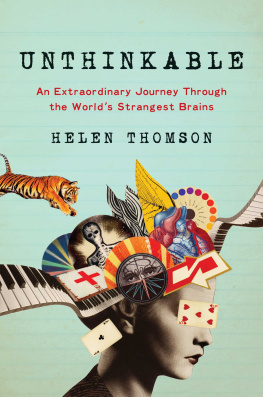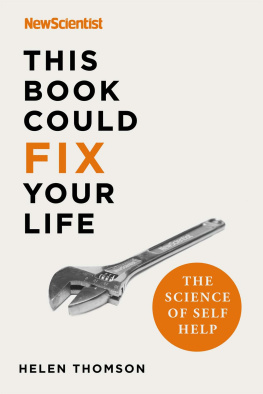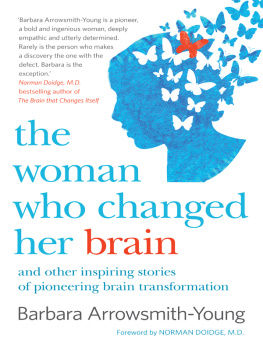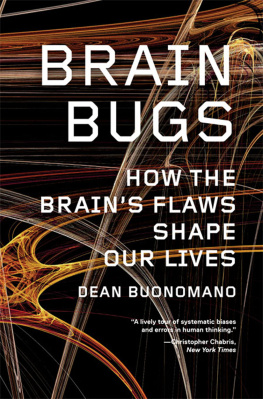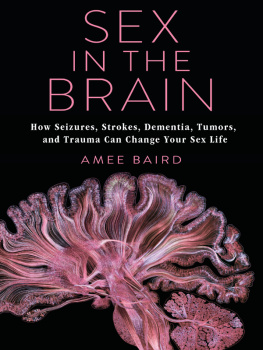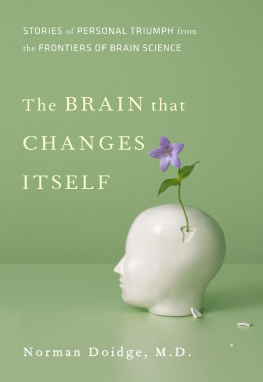I ts not something you easily forget, the first time you see a human head sitting upon a table. The worst part is the smell. The unforgettable stench of formaldehyde, the chemical fixative in which bits of the body are hardened and preserved. It gets up into your nostrils and really sticks around.
It wasnt the only head in the room; there were six, all severed at slightly different angles. This particular head had been lopped off just below the chin, and then sliced in half down the center of its face. It had belonged to an elderly gentlemanthe deep wrinkles etched into his forehead held whispers of a long life. As I slowly circled the table, I saw a few gray hairs sticking out of a generous nose, an unruly eyebrow and a tiny purple bruise just above the cheekbone. And suddenly there it was, sitting in the middle of a thick bony skulla human brain.
It had a grayish yellow tinge and a texture that conjured up thoughts of a shiny panna cotta. The outermost layer swirled around like a walnut. There were lumps and hollows, strands that looked like chewed-up chicken and a region at the back resembling a shriveled cauliflower. I wanted to run my finger over its silky contours, but there was strictly no touching. I satisfied myself by placing my head just inches from his, wondering what life it had once held. I called him Clive.
I HAVE ALWAYS BEEN interested in peoples lives. Perhaps this is why I was compelled to study the human brain at university. The two are, after all, inextricably linked. Everything that we feel, every story we experience or tell, we owe to that three-pound lump of mush in our heads.
That may seem obvious today, but it wasnt always so clear. The first mention of the brain was by the ancient Egyptians in a surgical scroll called the Edwin Smith Papyrus. They wrote that the way to identify the brain was to probe a head wound and see whether it throbs and flutters under your fingertips. But seemingly it was an organ of little interest. If a head wound had occurred, they would pour oil on it and take the patients pulse to measure his heart... in order to learn the knowledge that comes from it. For it was the heart, not the brain, that was believed to house our mind at the time. After death, the heart was carefully preserved inside the body to allow safe passage into the afterlife, while the brain was fished out piece by piece through the nose.
It was only around 300 BC , when Plato began grappling with the idea that the brain was the seat of the immortal human soul, that it gained a greater significance in medical thought. But although his teachings would later influence many scholars, his own peers were not convinced. Even Platos best student, Aristotle, continued to argue that the mind was contained in the heart. Physicians at the time were reluctant to open human cadavers, fearful of preventing their owners souls from reaching the afterlife. So his arguments were largely based on dissections of the animal kingdom, which revealed that many creatures had no visible brain at all. How then could it have any vital role?
Aristotle declared that the heart carried out the responsibilities of the rational soul, providing life to the rest of the body. The brain was there simply as a cooling system, tempering the heat and seething of the heart.
(Later well find out that they may both have been correctthat you cannot think or feel without both your heart and brain communicating with each other.)
The Greek anatomists Herophilus and Erasistratus finally got the chance to dissect the human brain in 322 BC . Less concerned with identifying the soul, they concentrated on basic physiology, discovering the network of fibers that run from the brain to the spine and out around the bodywhat we now refer to as the nervous system.
It was down in the gladiator stadium, however, where the brain really came into its own. The philosopher, physician and writer Claudius Galen was forbidden by Roman law from dissecting the human brain for himself, so instead he would head to the dusty arena, where he could gain a snapshot of the brains anatomy by treating bloodied soldiers whose skulls had been torn apart in combat.
But it was his experiments on live, squealing pigs that caused the biggest sensation. In front of a large crowd, he would slice through the laryngeal nerve connecting the pigs voice box to its brain, and watch as the pig fell silent. The crowds would gaspGalen had offered the first public demonstration that the mind, not the heart, controlled behavior.
Galen also discovered four cavities within the human brain, later called ventricles. We now know that ventricles are spaces containing fluid that protects the brain against physical knocks and disease, but Galens prevailing view was that all aspects of the immortal soul floated around these ventricles. It then passed into animal spirits, which were pumped around the body. This explanation particularly suited those high up in the Christian church, who were growing increasingly concerned about the idea that the brain could provide a physical basis for the soul. How could something be immortal if it was present in such frail flesh? It was much more palatable to place our soul in these empty spaces instead.
GALENS THEORIES OF THE BRAIN reigned for fifteen centuries, and religion continued to influence those who built upon his ideas. Ren Descartes, for instance, famously declared that the mind and the body were separatewhat is now known as dualism. The mind was immaterial and did not follow the laws of physics. Instead, he said, it did its bidding via the pineal gland, a small pine-nut-shaped region in the center of the brain. The pineal gland would move, letting out the particular animal spirit required to carry out the souls needs. His purpose in showing this distinction was to rebut those irreligious people who would not believe in the souls immortality without a scientific demonstration of it.
But it was in the dirty, smoke-filled streets of seventeenth-century Oxford where things really started to get interesting. Down in the bowels of the citys university, a resourceful young physician called Thomas Willis was sharpening his scalpel.
In front of a large audience of anatomists, philosophers and interested public, he would carve up the human body and brain, demonstrating its intricate anatomy to anyone who cared to watch. He had been given permission to do so by King Charles I, who allowed him to dissect any criminal sentenced to death within the city. It was thanks to this that he created meticulous illustrations of the human brain, and was said to have become addicted... to the opening of heads.
I mention Willis for it was he who really began to cement the idea that our human identity was connected to the brain. He started to match the altered behavior he observed during his patients lives to deformities he discovered during autopsy. For instance, he noted that people who had pains in the back of their head, near to an area of the brain called the cerebellum, also had pain in their heart. To prove that the two were linked, Willis opened up a live dog and clamped the nerves running between the twothe dogs heart stopped and the animal died almost immediately. Willis went on to examine how the brains chemistry might produce other aspects of our lives: dreams, imagination and memories. It was a project that he called neurologie.
In the nineteenth century, the German anatomist Franz Joseph Gall pulled us closer still to our modern understanding of the brain by advocating the idea of localization. The brain, he said, was comprised of specific compartments, each responsible for a fundamental faculty or tendency, including a talent for poetry and an instinct for murder. He also thought that the shape of the skull could determine personality. Gall had a friend who had big bulging eyes, and because his friend also had a fantastic memory and was great with languages, he believed that the brain regions responsible for these abilities must be located behind the eyes, and had grown so large that they were pushing the eyeballs outward. Despite phrenology later being discredited, Galls idea of the brain being made up of discrete regions was prescientin some cases he was even correct in pinpointing their responsibilities. His organ of mirthfulness, for instance, was placed toward the front of the head, just above the eyes. In later years, neurologists would come to stimulate this area and in doing so make a patient burst out laughing.

